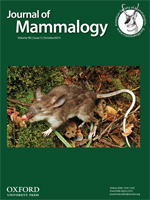While they are among the most ecologically important animals within forest ecosystems, little is known about how bats respond to habitat loss and fragmentation. The threatened lesser short-tailed bat (Mystacina tuberculata), considered to be an obligate deep-forest species, is one of only 2 extant land mammals endemic to New Zealand; it plays a number of important roles within native forests, including pollination and seed dispersal, and rarely occurs in modified forests. We used radiotelemetry to study the movements, roosting behavior, and habitat use of M. tuberculata within a fragmented landscape comprised of 3 main habitat types: open space (harvested forest and pastoral land), native forests, and exotic pine plantations. We found that the bats had smaller home-range areas and travelled shorter nightly distances than populations investigated previously from contiguous native forest. Furthermore, M. tuberculata occupied all 3 habitat types, with native forest being preferred overall. However, individual variation in habitat selection was high, with some bats preferring exotic plantation and open space over native forest. Roosting patterns were similar to those previously observed in contiguous forest; individual bats often switched between communal and solitary roosts. Our findings indicate that M. tuberculata exhibit some degree of behavioral plasticity that allows them to adapt to different landscape mosaics and exploit alternative habitats. To our knowledge, this is the first such documentation of plasticity in habitat use for a bat species believed to be an obligate forest-dweller.
How to translate text using browser tools
29 September 2015
Adoption of Alternative Habitats by a Threatened, “Obligate” Forest-Dwelling Bat in a Fragmented Landscape
Cory Alexander Toth,
Georgia Cummings,
Todd Elliott Dennis,
Stuart Parsons
ACCESS THE FULL ARTICLE

Journal of Mammalogy
Vol. 96 • No. 5
October 2015
Vol. 96 • No. 5
October 2015
habitat use
home-range area
Mystacina tuberculata
radiotelemetry
roosting behavior




